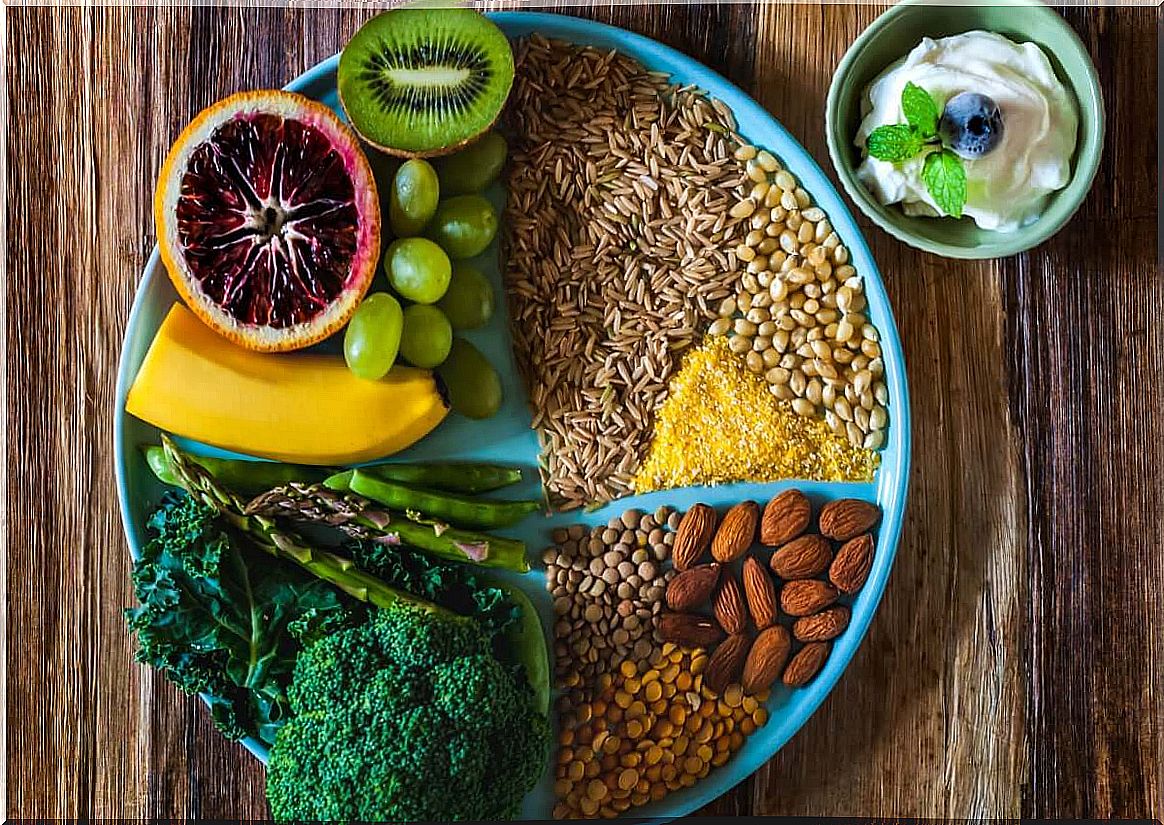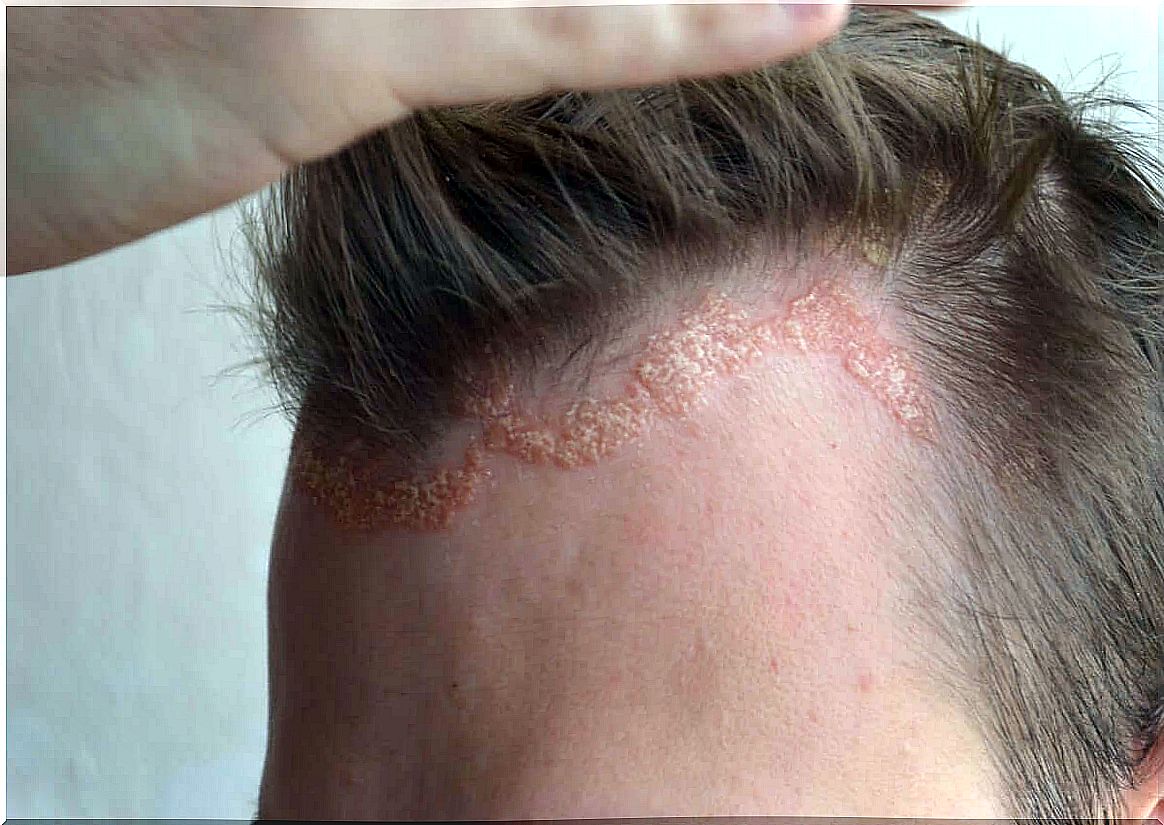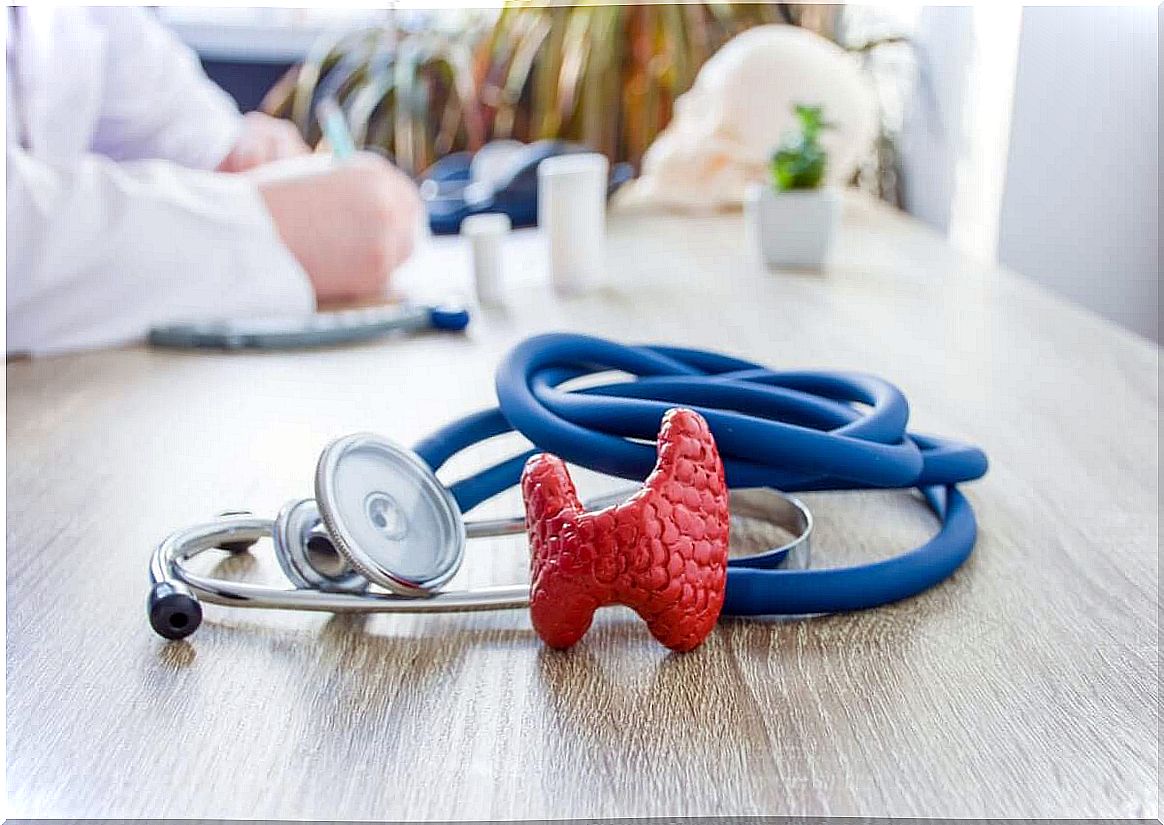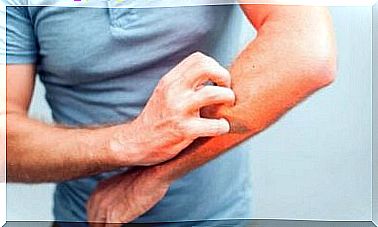The AIP Diet To Control Autoimmune Diseases
The autoimmune protocol (AIP) is a type of diet whose objective is to mitigate inflammation, pain and other kinds of manifestations autoimmune disease clinics. What does it consist on ?

The AIP diet, also known as the “Autoimmune Protocol Diet”, is a dietary model that has gained tremendous popularity in recent years. It consists of avoiding the consumption of certain foods for several weeks in order to observe changes in health.
As stated in an article published in Inflammatory Bowel Diseases , its aim is to help control inflammation, pain and other symptoms of autoimmune pathologies, such as inflammatory bowel disease and celiac disease, among others. . What should I know about this?
What does the AIP diet consist of?
The Autoimmune Protocol (AIP) is an elimination diet that involves not eating certain varieties of foods for several weeks in order to see the health effects. Especially in the presence of autoimmune diseases such as psoriasis, rheumatoid arthritis, lupus and inflammatory bowel disease, among others.
These pathologies present symptoms ranging from joint pain to fatigue, including abdominal pain, diarrhea, nerve damage and mental confusion.
Although their origin is multifactorial and includes genetic and environmental factors, there is a hypothesis that links them to the deterioration of the intestinal barrier. This in turn is linked to the consumption of certain foods.
The AIP diet aims to eliminate and replace these foods with options rich in nutrients that help “repair” the intestine and promote the balance of its microbiota. In addition, it suggests eliminating products such as those that contain gluten or lactose. Because, these often cause abnormal immune reactions in sensitive people.

Phases of the AIP diet
The autoimmune protocol slightly resembles the paleo diet . Indeed, some experts classify it as an extension of this dietary model. In any case, the AIP variant is a bit more stringent and has two main phases.
Elimination phase
The first phase of the AIP diet involves eliminating foods and drugs that may be associated with gut inflammation or imbalances in the microbiota. This takes into account products that generally cause allergies and adverse reactions. For example:
- Cereals
- Legumes
- Dried fruits
- Seeds
- Solanaceae vegetables
- Eggs
- Dairy products
- Vegetal oils
- Food additives
- Refined sugars
- Coffee
- Alcohol
- Tobacco
- Processed products
- Nonsteroidal anti-inflammatory drugs (Aine) like ibuprofen, naproxen, diclofenac, and aspirin in high doses.
Obviously, instead of these, we increase the consumption of fresh and nutrient-rich products. Without leaving aside fermented foods, or foods with a certain content of probiotics. In addition, the emphasis is on improving the lifestyle through relaxation techniques, physical activity and better quality of sleep.
The duration of this phase may extend until the person experiences improvement in their symptoms. In general, it can last between 30 and 90 days. However, some people feel the benefits from the third week.
Reintroduction phase
As soon as an improvement in the symptoms of the disease is perceived, then the reintroduction phase begins. It consists of gradually incorporating the eliminated foods, one at a time, depending on the person’s tolerance level.
The objective of this phase is to identify the foods that can be at the origin of the symptoms of the pathology. On the other hand, we are trying to reintroduce those that do not cause any symptoms in order to ensure a more varied and complete diet.
Each food is therefore reintroduced little by little, with a delay of 5 to 7 days between one food and another. This period is sufficient to determine if any of the symptoms reappear after ingestion. Foods that are well tolerated can be incorporated into the usual diet. The others are eliminated.
Food reintroduction phase
To reintroduce food into the AIP diet, it is necessary to follow a few steps. It is also necessary to choose the right time and circumstances that do not provoke the inflammation. Therefore, after a bad night’s sleep or stressful times, it is better to postpone it.
If possible, it is best to introduce foods that have lower concentrations of the substance that can trigger the symptoms. For example, in the case of dairy products, it is ideal to start with fermented products like yogurt. The steps are as follows:
- Choose the food to reintroduce. Then consume it several times during the reintroduction day. Then eliminate it again completely for 5 or 6 days.
- Eat a small amount of the food and wait about 15 minutes to observe any reactions.
- If there are any symptoms, the test should stop and the food should be eliminated from the diet. Otherwise, more of the food should be ingested while paying attention to the effects over the next 2-3 hours.
- In the absence of symptoms, it is possible to consume a normal portion of the food. We then avoid reintroducing another for 5 or 6 days.
- Repeat the process with another food.
Foods allowed and prohibited in the AIP diet
In order for the AIP diet to provide good results, it is imperative to adhere to the recommendations regarding permitted and prohibited foods. In this regard, it should be noted that there are many restrictions. It is therefore wise to seek advice from a nutrition professional in order to prevent deficiencies.
Food allowed
- Various vegetables, except those belonging to the nightshade and algae family.
- High quality fish and seafood rich in omega 3.
- Fresh fruit, in moderate portions.
- Fermented foods and probiotics (kombucha, kimchi, sauerkraut, vegetables in brine, coconut kefir).
- Lean meats and beef liver.
- Olive, coconut and avocado oil.
- Plants and spices not grown from seeds.
- Natural sweeteners like honey, in moderate amounts.
- Bone broth.
- Green tea and black tea.
Prohibited foods
- Solanaceae, such as tomatoes, potatoes, peppers and eggplants.
- Cereals (Rice, wheat, oats, rye, barley and derivatives).
- Legumes.
- Dairy products.
- Vegetable oils (except those mentioned above).
- Coffee.
- Eggs.
- Dried fruits and seeds.
- Alcohol.
- Food additives, such as refined sugar and trans fats.
Does the AIP diet work?
To date, scientific evidence on the AIP diet remains limited. Despite this, some studies support that it can decrease inflammation as well as the clinical manifestations of some autoimmune diseases. Let’s see this in detail.
An adjuvant against leaky gut
People who suffer from autoimmune-type diseases usually have a leaky gut. According to research, there is a link between inflammation and the permeability of the gut. Therefore, the person may be suffering from an inflammatory disorder.
In addition, the results determined that the AIP diet, by contributing to the relief of leaky gut, reduced the degree of inflammation and its associated symptoms. Still, more research is needed.
A supplement against the symptoms of autoimmune diseases
It should also be noted that this dietary protocol has brought positive results against the symptoms of autoimmune diseases. Like for example irritable bowel syndrome, and Hashimoto’s thyroiditis. A reduction in inflammation of between 29% and 68% has even been observed.

What are the disadvantages of the AIP diet?
The main downside to this diet is that it is a restrictive eating pattern. Especially during the elimination phase. This situation is not obvious and does not suit everyone.
In addition, the person may go through phases of anxiety or social isolation due to dietary restrictions. Without proper planning, the diet can also lead to nutritional deficiencies.
Finally, there is no guarantee that this protocol reduces inflammation and symptoms of autoimmune diseases. Yet there are many who experience its positive effects.
Consulting a nutritionist is the best option
At first glance, it seems that setting up the AIP regime is straightforward when you consider its rules. However, this is a protocol that can be adopted with great caution as it involves significant dietary restrictions.
It is therefore essential to consult a nutritionist or a doctor to receive all the necessary information on this protocol. The professional will actually help to determine the effectiveness of the regimen in each case as well as the means to implement it to avoid the adverse effects.









